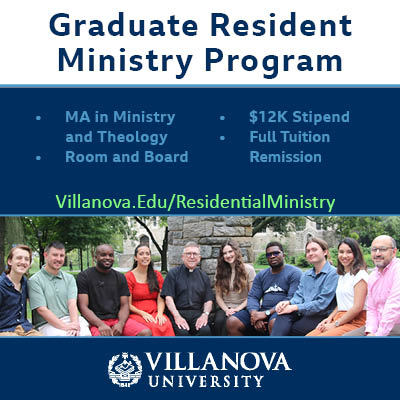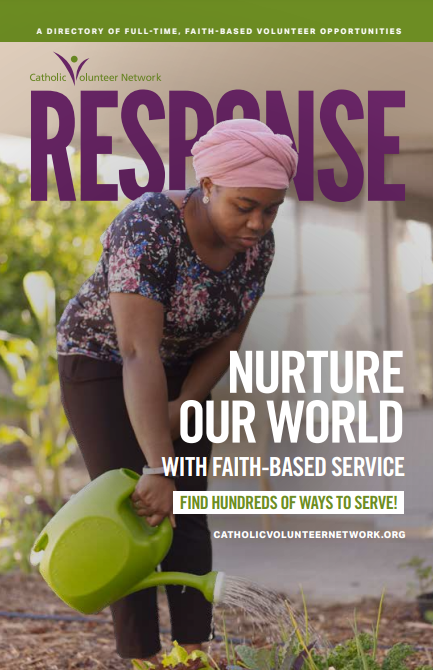By William Brown, AmeriCorps Teacher at Cristo Rey Boston High School
 |
| Will provides supplemental academic and behavioral support for struggling students. |
Fielding the go-to small talk question at social gatherings of “so what do you do for a living?” has yielded a breadth of fascinating conversations over the past year. Upon hearing that I am serving as an AmeriCorps Member at Cristo Rey Boston High School, people tend to light up and be brimming with questions. Each conversation is unique, but a striking point of continuity is the root question of “why do you serve?” that lies beneath amazement over hours, jobs, pay and work circumstances.
To some degree, I understand the incredulity. The day in, day out of service at Cristo Rey Boston High School is demanding, to put it mildly. The number of hats that my service asks me to wear in an average day seems silly from an outside perspective. Listing off a handful of daily duties like greeting our students with a smile in the morning, preparing them for their day at their Corporate Work Study Placements, networking with local partners to plan extracurricular events to offer to the student body, analyzing behavioral data, teaching programming languages and organizing community service opportunities usually elicits anything from scoffs to shocked amazement. The thought of giving so much directly after graduating from a top university for no personal monetary gain is baffling to some and absurd to others. Almost without fail I have found that the more I explain, the more an outside observer visibly struggles with that basic question of “why?”
The answer to that root question of “why do you serve” is deceptively simple: I believe in these students, and I believe that the world becomes more just by affording them the opportunity to realize the culmination of their potential. Every student that comes through Cristo Rey’s doors is playing from behind in a systemic sense. Many come to us as freshmen with 6th or 7th grade reading, writing, and math skill sets. An average family of four makes less than $26,000 per year, qualifying a vast majority of our students for the Federal Free and Reduced Lunch Program. The student body consists overwhelmingly of minorities, with a notable number of students being the children of immigrants. Although not quantifiable with a crisp number, this population grapples with issues present in both home and neighborhood life that I struggle to wrap my head around given my background as a white, upper-middle class male from California. Statistically speaking, the very same students that we deliberately choose to accept are the ones that are vulnerable to succumbing to the socioeconomic pressures that perpetuate a cycle of poverty.
| Will meets with his advisory group where students discuss character traits like resilience, openness to growth and perseverance. |
And yet, every student that graduates from Cristo Rey is accepted to a four year college. Although we are a young school, 70% of our graduates have graduated or are in line to graduate from four year colleges.
Through this unique educational model that blends academic rigor, development as professionals, and deliberate care for each and every student, these young adults are given the opportunity to take control of their own destiny; to grasp the American Dream where their hard work and dedication is rewarded with success and prosperity.
In light of such an understanding, service is not a burden, with demanding hours, overwhelmingly varied job responsibilities, no monetary gain, and a challenging work environment. It is an opportunity, in my own small way, to contribute to a movement that is opening a door for a new generation of leaders to realize their potential and shatter the cycle of poverty. By acting as a teacher, a mentor and a trusted adult figure, I am able to walk with these students on a daily basis as they struggle through the bitter work required to better realize their dignity and worth as human beings. Serving allows me to go to this margin and witness firsthand the world as it turns towards justice.
As one would expect, piecing through this root explanation of why I serve in a casual conversation is not the most realistic response. Instead, I point inquiring minds to keep an eye on these students and their futures. Watch what they do, what they achieve. See where they are in a decade, two decades. Keep an eye on them as they translate their education into an opportunity to break free of the cycle of poverty and turn the world towards justice. Then come to understand why I, and so many others like me, choose to serve.


 Thousands of faith-based service opportunities can be at your fingertips with the RESPONSE. Download the latest edition today!
Thousands of faith-based service opportunities can be at your fingertips with the RESPONSE. Download the latest edition today!
